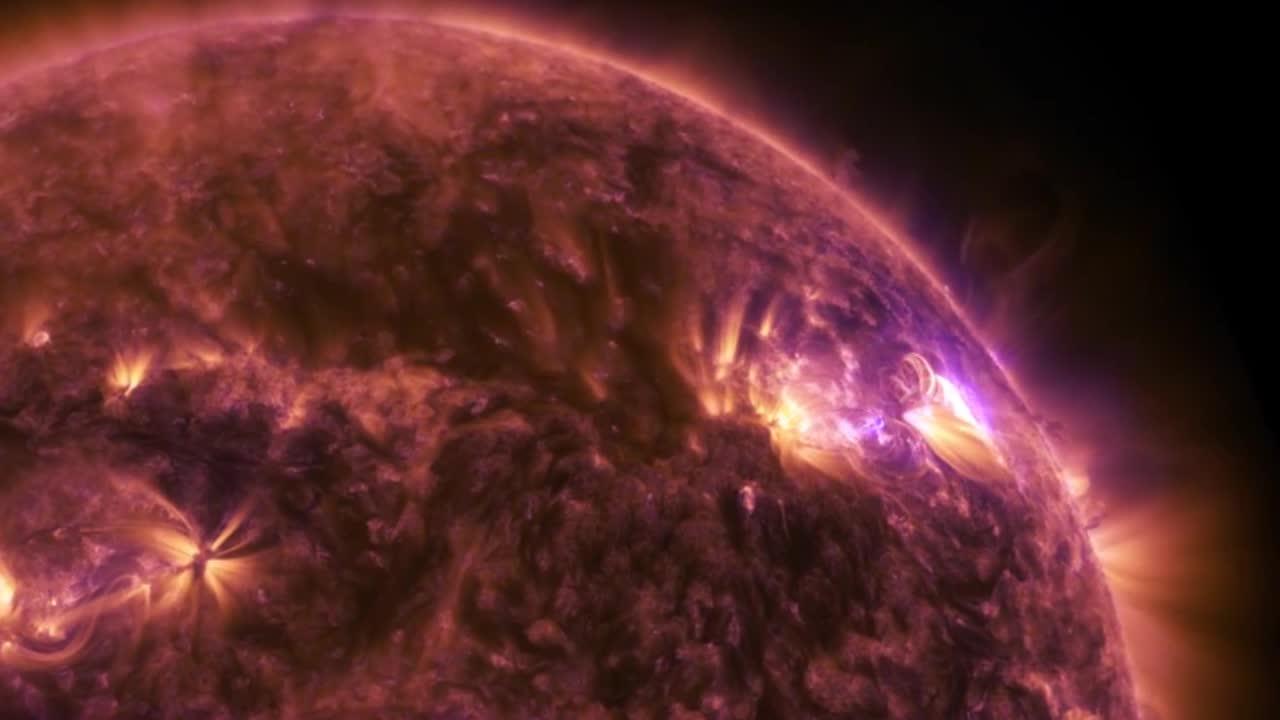‘Monster’ explosions on the sun will ‘become more common’, Nasa warns
The sun will be rocked by an increased number of gigantic ‘monster’ explosions in the coming years, Nasa has warned.
Eruptions from the face of our star are called ‘prominences’ and cause vast amounts of superhot gas to shoot into space, often forming beautiful loops on the solar surface.
The sun is about to reach a low point of activity called the solar minimum when the number of flares and sunspots and flares is dramatically reduced. Climate change deniers are known to hail this stage of the sun’s natural cycle as proof that global warming is a hoax, because solar minimums are known to cause cooler weather here on Earth.
Sadly, the sun will spring back from its minimum after roughly 11 years, although this period of low activity has been known to continue for much longer. When this happens, we’re likely to see more and more ferocious explosions on the sun.
Nasa warned: ‘After our Sun passes the current Solar Minimum, solar activity like eruptive prominences are expected to become more common over the next few years.’
The space agency has just released dramatic pictures of a ‘monster’ solar prominence recording by its Solar Dynamic Observatory in 2011, which shows what we should expect to see when the sun’s minimum reaches its end. Nasa wrote: ‘The dramatic explosion was captured in ultraviolet light in the featured time lapse video covering 90 minutes, where a new frame was taken every 24 seconds. ‘The scale of the prominence is huge – the entire Earth would easily fit under the flowing curtain of hot gas.
A solar prominence is channelled and sometimes held above the Sun’s surface by the Sun’s magnetic field. ‘A quiescent prominence typically lasts about a month, and may erupt in a Coronal Mass Ejection (CME) expelling hot gas into the Solar System. The energy mechanism that creates a solar prominence is still a topic of research.’
Solar eruptions cause solar storms which spark beautiful auroras – but a powerful tempest could bring civilisation to its knees (Image: Nasa) A prominence is not necessarily a threat to Earth, because they tend to loop into space and then fall back into the sun. But sometimes they can cause a ‘Coronal Mass Ejection’ which causes billions of tons of particles to gush outwards at high speed.
These eruptions are generally only strong enough to cause problems for communications satellites or other spacecraft. Sometimes, however, they are much stronger and could be powerful enough to ‘impair’ human civilisation, Nasa warned earlier this year.
The most famous Coronal Mass Ejection occurred in 1859 and caused a geomagnetic storm called the ‘Carrington Event’ as a pulse of charged particles bombarded Earth’s magnetosphere. If this happened today, the results would be devastating.
In April, Nasa wrote: ‘The Carrington Event compressed the Earth’s magnetic field so violently that currents were created in telegraph wires so great that many wires sparked and gave telegraph operators shocks. ‘Were a Carrington-class event to impact the Earth today, speculation holds that damage might occur to global power grids and electronics on a scale never yet experienced.’





